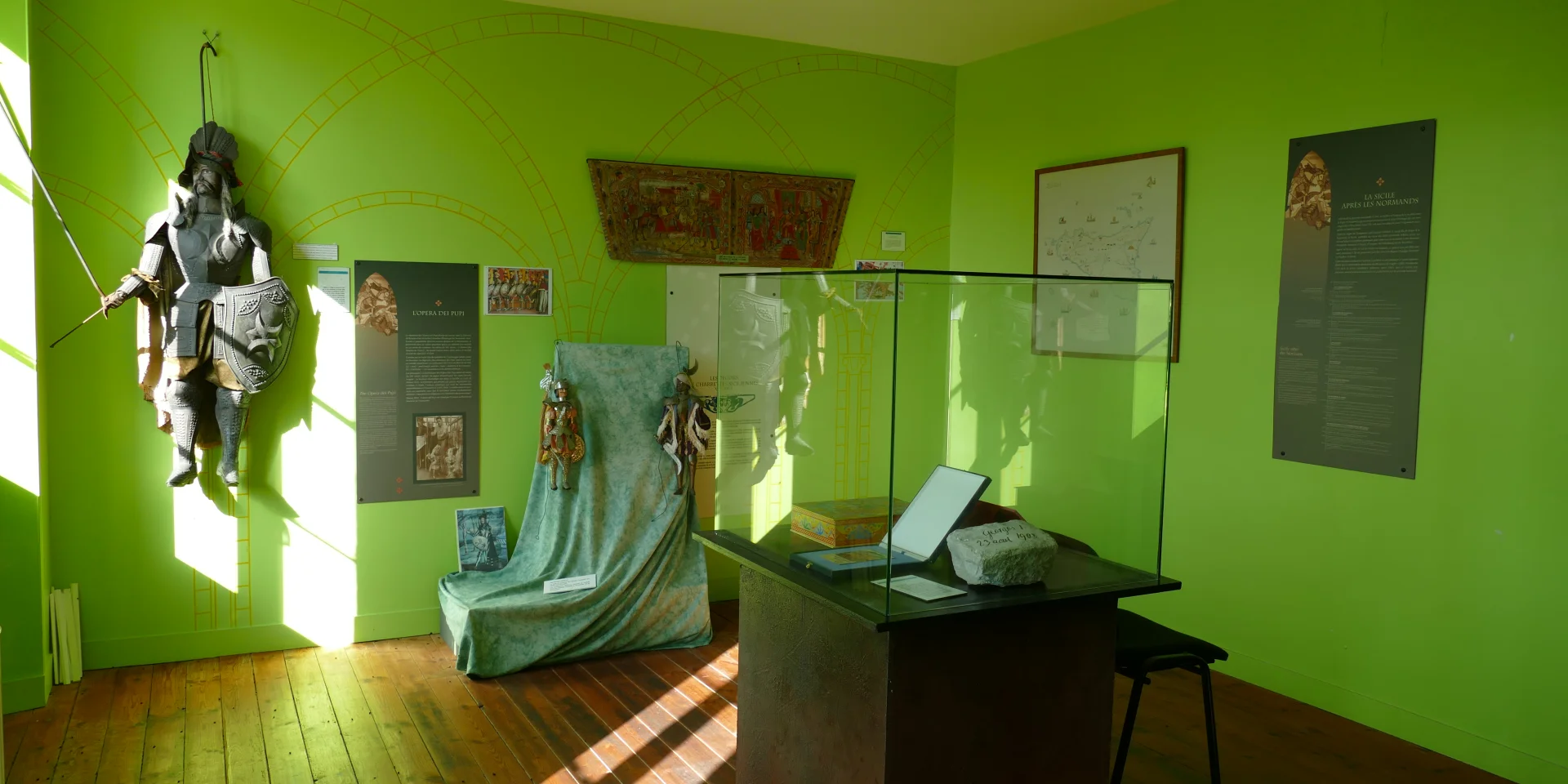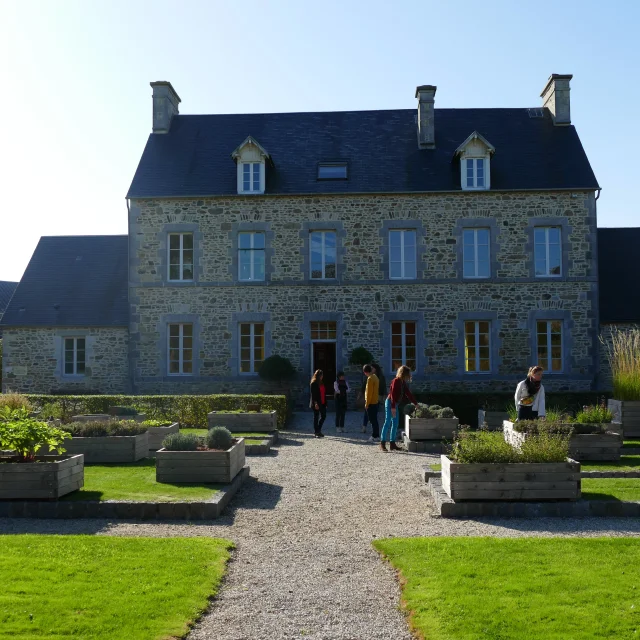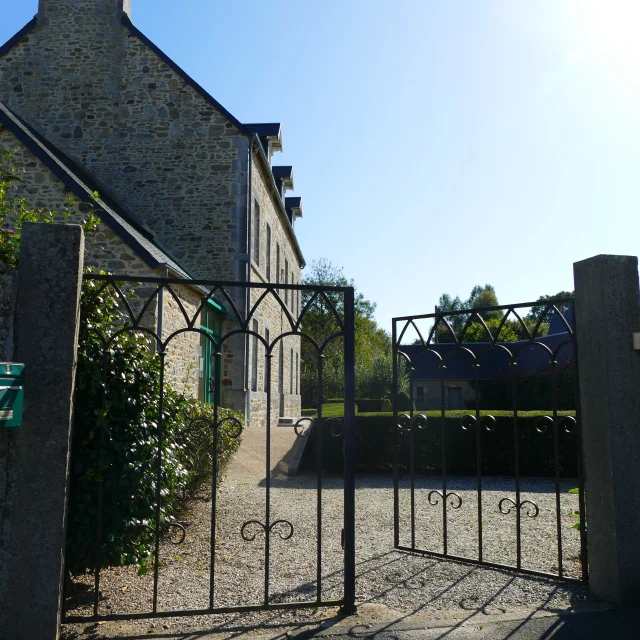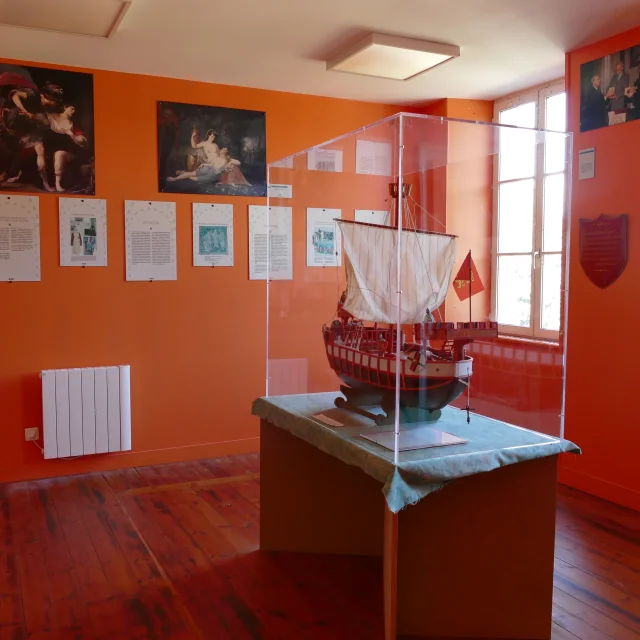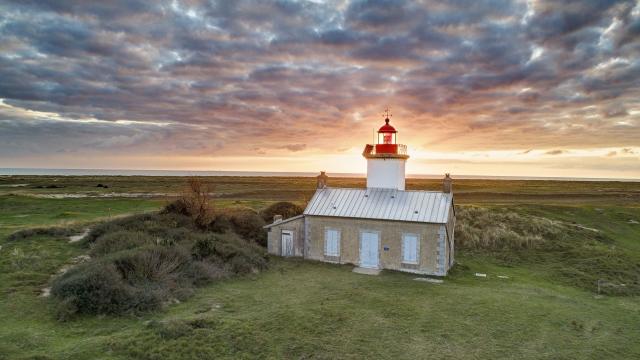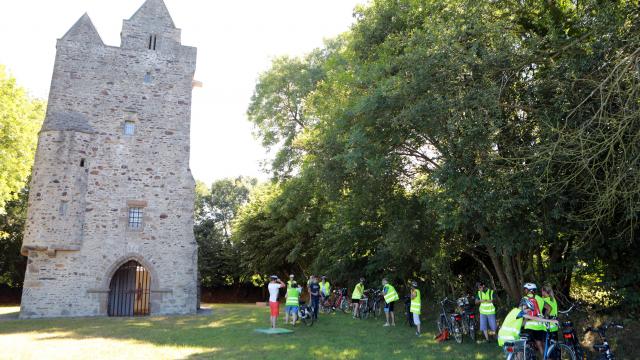It all starts in Normandy, in the south of the Cotentin region, in the Saint-Sauveur-Lendelin area, in a small village now called Hauteville-la-Guichard. Here lives a small nobleman of no great wealth or influence, Tancrède de Hauteville, who was born towards the end of the 10th century. A good warrior with extraordinary strength, Tancrède distinguished himself by killing a large boar that had charged Duke Richard 1st of Normandy during a hunting party not far from his lands, with a single sword thrust through the forehead to the guard. As a reward, the duke gave him one of his many daughters and the leadership of the ducal guard. Aimé de Montcassin (writing in Italy around 1070) has this to say of Tancred: “…Tancrède, lord of Hauteville in the land of Contentin in Normandy, lived under Duke Richard, who held him in high esteem for his valor at court and in whose armies he served with ten knights from his vassals. He belonged to the order of those called barons, who had the right to bear banners in war and to have war cries…”. Tancredi was successively married to 2 women, Murielle and Frédésende of Normandy. From his two wives, Tancredi had some fifteen children, including at least twelve sons. Unable to provide his children with sufficient land or fiefs, almost all of his sons, with the exception of the one who inherited the Hauteville estate, left in the 1030s to make their mark in the Mediterranean, in search of glory, fortune and land: These ambitious warriors mastered the cavalry charge, a military practice then unknown in southern Italy. They laid the foundations for the future Kingdom of Sicily (1130-1816).
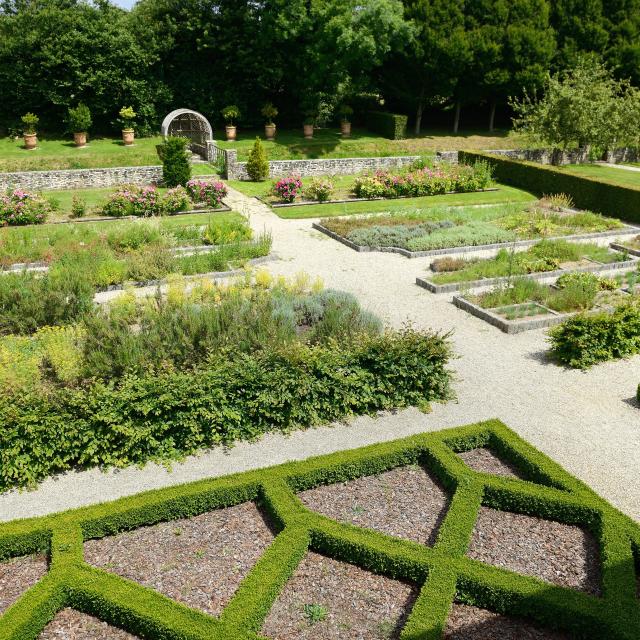 View of a well-organized medieval garden with plants and aromatic herbs. The plants are arranged in squares and rectangles, separated by gravel paths. The edges are neatly trimmed and trees and shrubs are visible in the background.
View of a well-organized medieval garden with plants and aromatic herbs. The plants are arranged in squares and rectangles, separated by gravel paths. The edges are neatly trimmed and trees and shrubs are visible in the background.